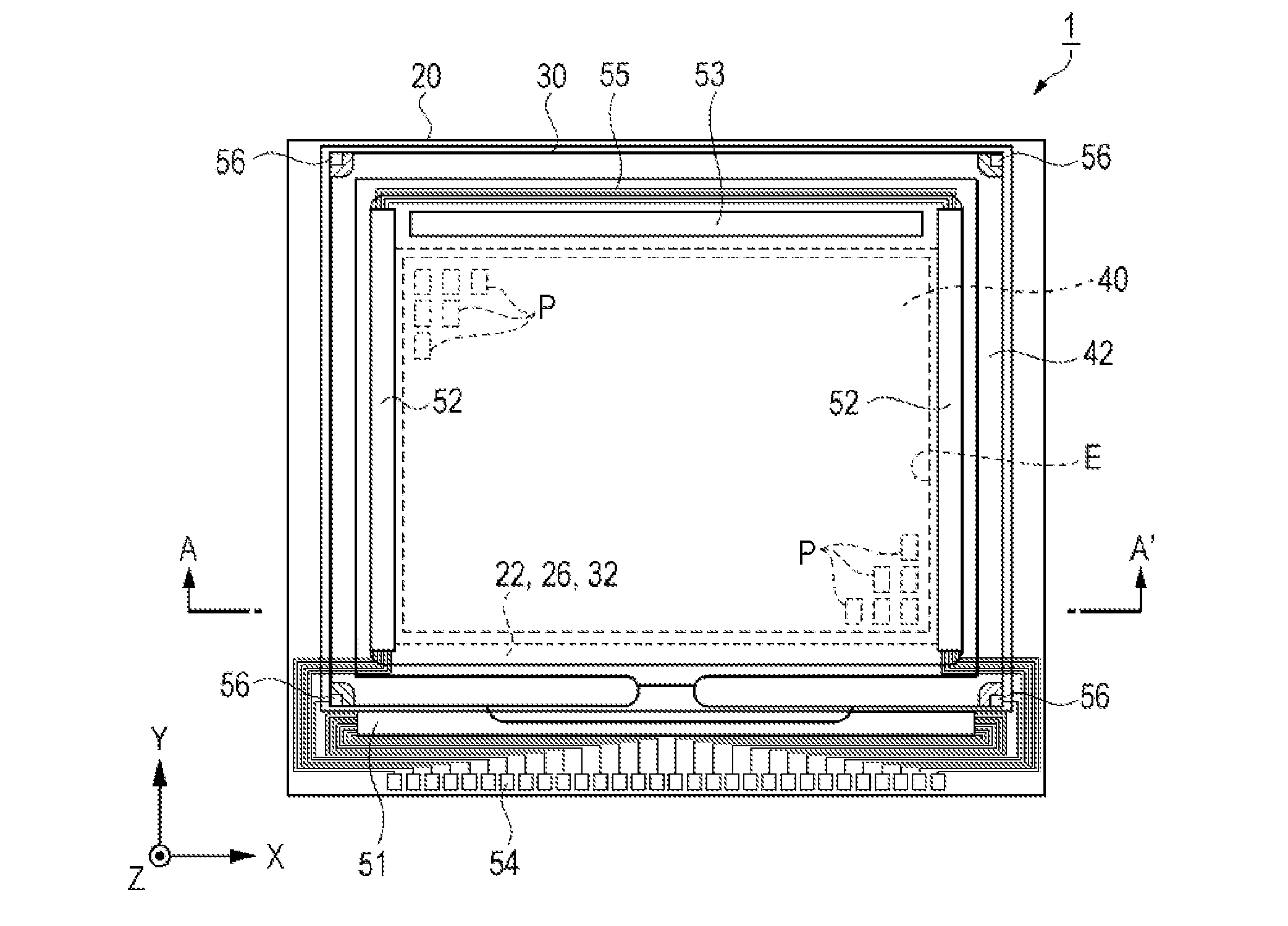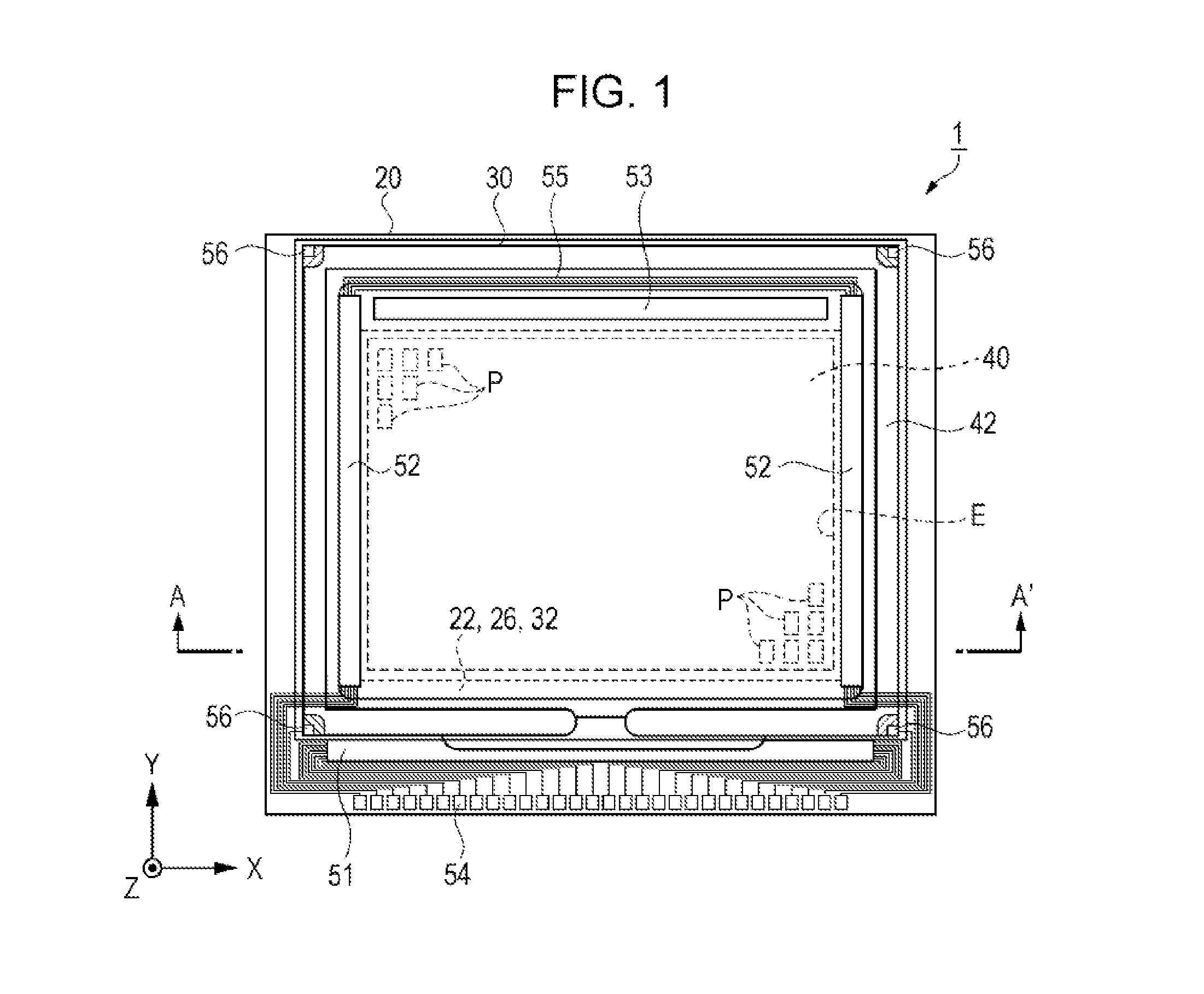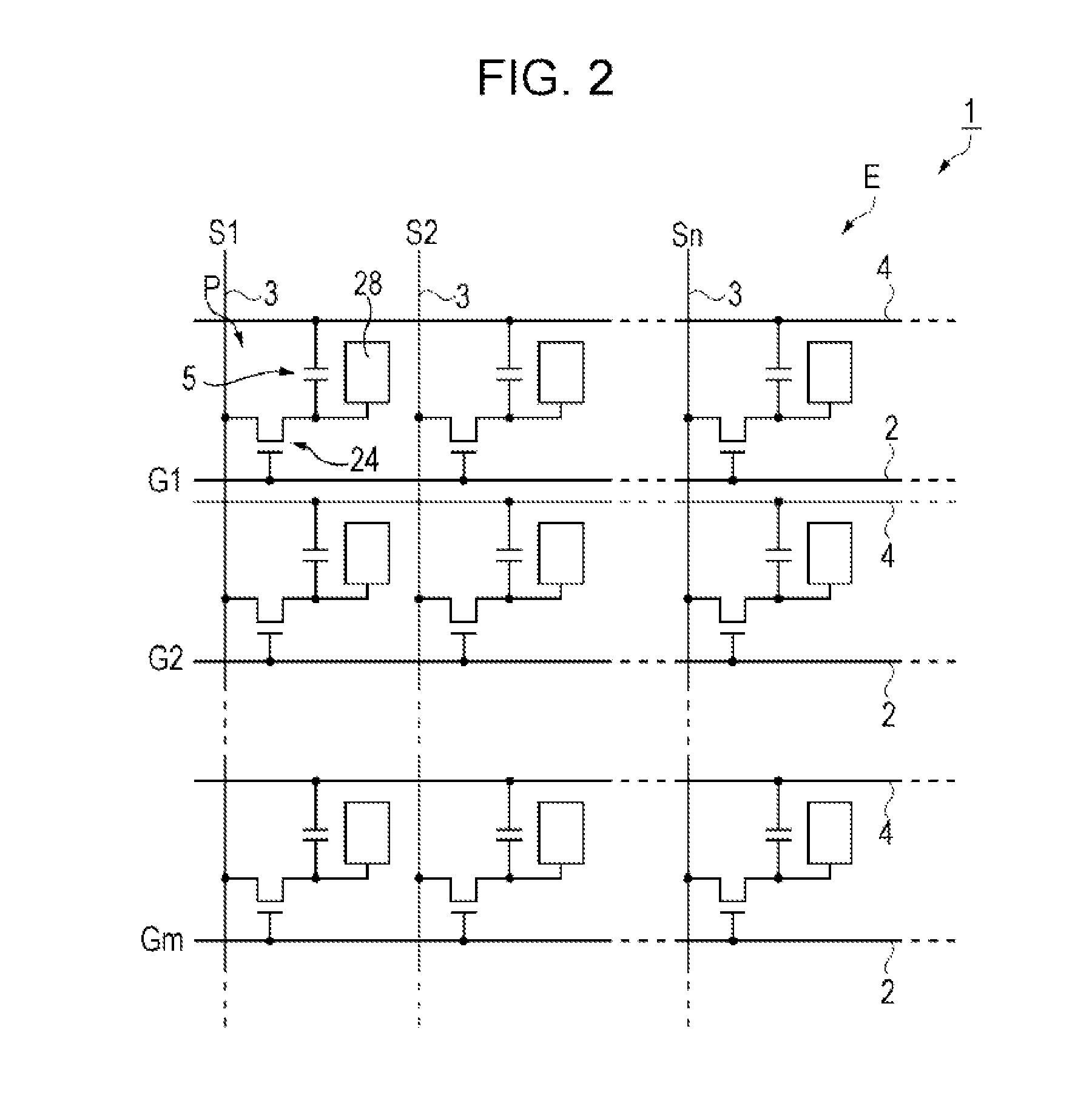Micro lens array substrate, electro-optical device, and electronic apparatus
a technology of micro lens array and substrate, applied in the field of micro lens array substrate, can solve the problems of reducing affecting the efficiency of light utilization, so as to suppress the effect of unnecessary reflection or scattering of light at the interface of discontinuous parts, reducing the transmittance of incident light, and improving heat resistan
- Summary
- Abstract
- Description
- Claims
- Application Information
AI Technical Summary
Benefits of technology
Problems solved by technology
Method used
Image
Examples
first embodiment
Electro-Optical Device
[0051]As an example, an active matrix type liquid crystal device, as an electro-optical device, equipped with a thin film transistor (TFT) as a switching element of a pixel, is described. The liquid crystal device can be suitably used, for example, as a light modulation element (a liquid crystal light valve) of a projection type display apparatus (a projector) described below.
[0052]First, the liquid crystal device as the electro-optical device according to a first embodiment is described referring to FIG. 1, FIG. 2 and FIG. 3. FIG. 1 is a schematic plan view illustrating a configuration of the liquid crystal device according to the first embodiment. FIG. 2 is an equivalent circuit diagram illustrating an electric configuration of the liquid crystal device according to the first embodiment. FIG. 3 is a schematic cross-sectional view illustrating a configuration of the liquid crystal device according to the first embodiment. Specifically, FIG. 3 is a schematic cr...
second embodiment
[0114]Liquid crystal devices according to second and later embodiments are different in configuration of the micro lens array substrate, but because the other configurations are almost the same, a configuration of the micro lens array substrate and a method of manufacturing the micro lens array substrate are described, and descriptions of the other parts of the liquid crystal device are omitted.
Micro Lens Array Substrate
[0115]The configuration of the micro lens array substrate according to the second embodiment is described. FIG. 10 is a schematic plan view illustrating the configuration of the micro lens array substrate according to the second embodiment. FIGS. 11A and 11B are schematic cross-sectional views, each illustrating the configuration of the micro lens array substrate according to the second embodiment. Specifically, FIG. 11A is a schematic cross-sectional view taken along a line A-A′ (X-direction) in FIG. 10, and FIG. 11B is a schematic cross-sectional view taken along a...
third embodiment
Micro Lens Array Substrate
[0130]Next, a configuration of a micro lens array substrate according to a third embodiment is described. FIG. 12 is a schematic plan view illustrating the configuration of the micro lens array substrate according to the third embodiment. FIGS. 13A and 13B are schematic cross-sectional views, each illustrating the configurations of the micro lens array substrate according to the third embodiment. Specifically, FIG. 13A is a schematic cross-sectional view taken along a line A-A′ (X-direction) in FIG. 12, and FIG. 13B is a schematic cross-sectional view taken along a line B-B (W-direction) in FIG. 12.
[0131]A micro lens array substrate 10B according to the third embodiment is different from the micro lens array substrates 10 and 10A according to the embodiment described above in that a discontinuous part is provided along the thickness direction on a lens layer 12, but the micro array substrates 10, 10A, and 10B are almost the same in the other configurations....
PUM
 Login to View More
Login to View More Abstract
Description
Claims
Application Information
 Login to View More
Login to View More - R&D
- Intellectual Property
- Life Sciences
- Materials
- Tech Scout
- Unparalleled Data Quality
- Higher Quality Content
- 60% Fewer Hallucinations
Browse by: Latest US Patents, China's latest patents, Technical Efficacy Thesaurus, Application Domain, Technology Topic, Popular Technical Reports.
© 2025 PatSnap. All rights reserved.Legal|Privacy policy|Modern Slavery Act Transparency Statement|Sitemap|About US| Contact US: help@patsnap.com



